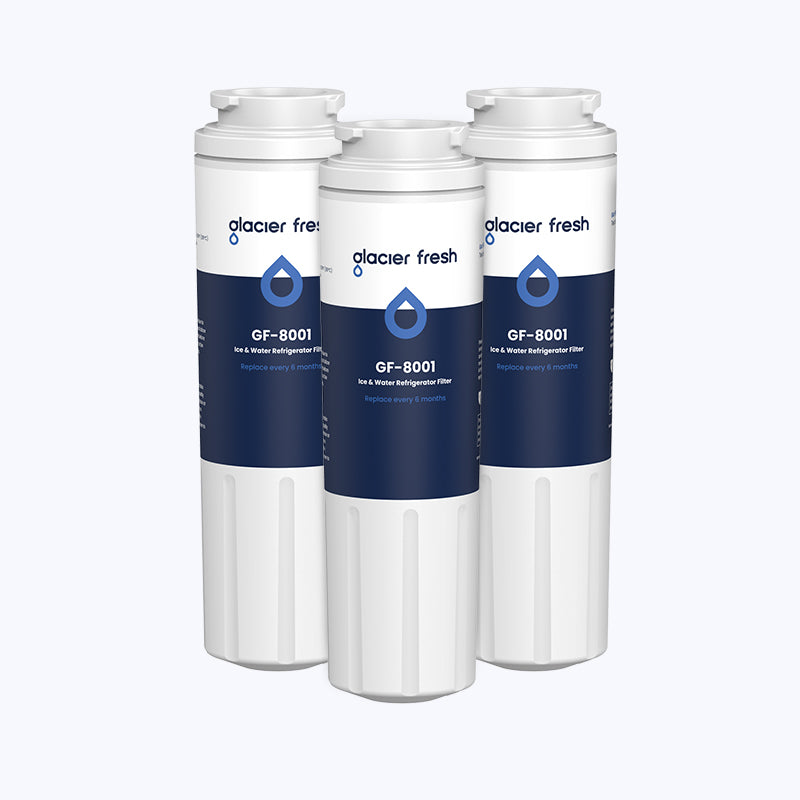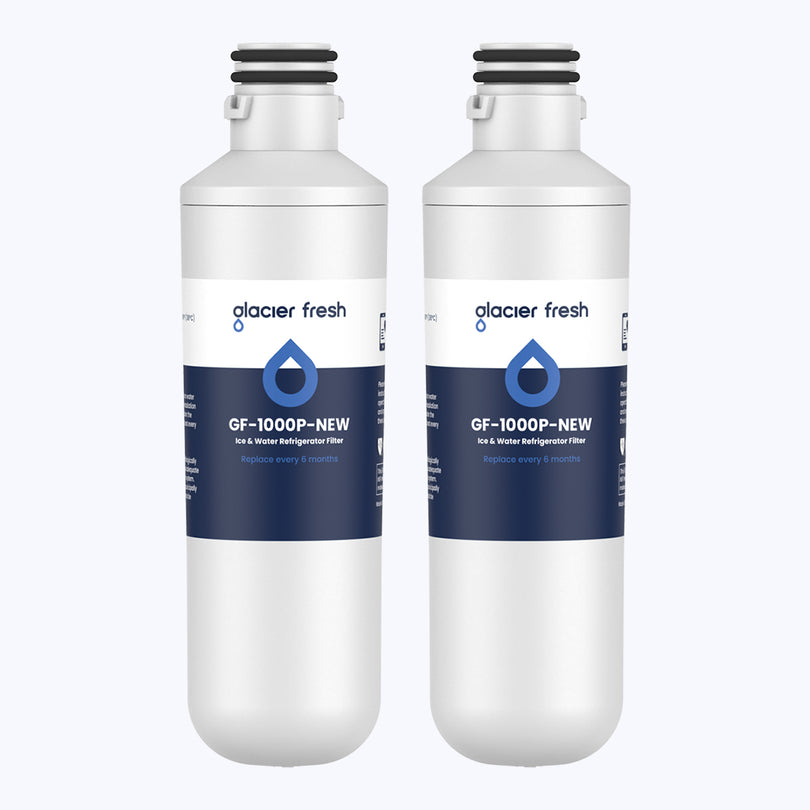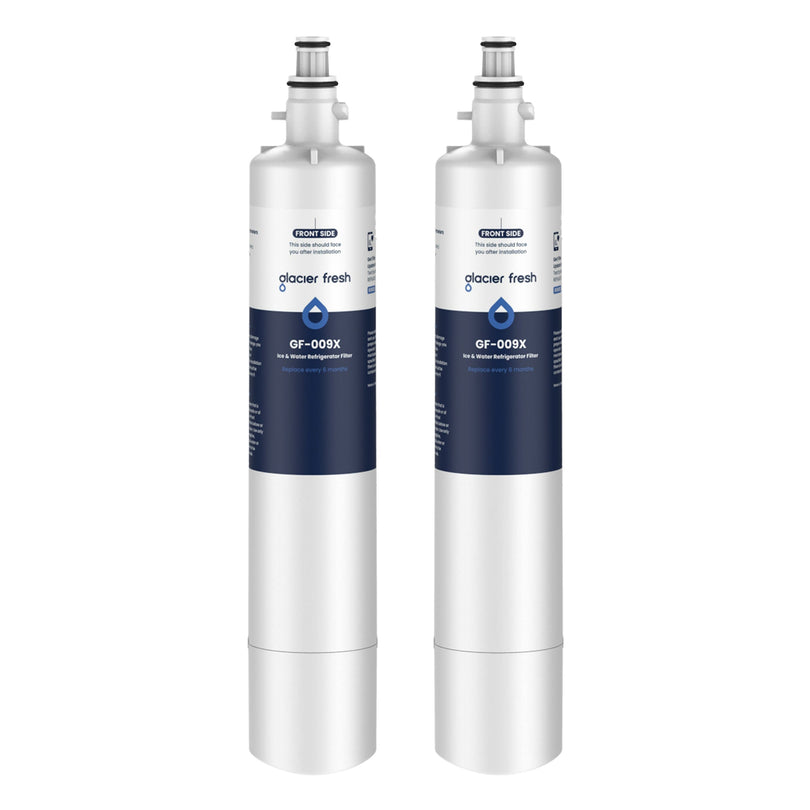Table of Contents:
Wie gut wissen Sie über Wasserfilterung?
Arten von Filtertechnologien
Die neuen Trends in der Wasserfiltrationstechnologie
Was ist neu im Jahr 2024?
Abschluss
Wissen Sie, was es 2024 Neues in der Wasserfiltertechnologie gibt? Entdecken Sie die neuesten aufkommenden Trends und die Revolutionierung der Art und Weise, wie wir Wasser filtern. Von fortschrittlichen Filtertechnologien bis hin zu innovativen Durchbrüchen bietet dieser Artikel wertvolle Einblicke in die neuesten Entwicklungen auf diesem Gebiet. Bleiben Sie auf dem Laufenden und entdecken Sie, wie diese Fortschritte die Qualität und Sicherheit Ihres Trinkwassers verbessern können.
Wie gut wissen Sie über Wasserfilterung?

Wasserknappheit ist in vielen Teilen der Welt ein dringendes Problem, weshalb Wasserfilterung unerlässlich ist, um sauberes und sicheres Trinkwasser zu gewährleisten. Eine der am häufigsten verwendeten Methoden der Wasserfilterung ist die Umkehrosmose. Bei diesem Verfahren wird Wasser durch eine halbdurchlässige Membran gepresst, um Verunreinigungen und Schadstoffe zu entfernen. Die Umkehrosmose ist äußerst wirksam bei der Verbesserung der Wasserqualität und der Beseitigung schädlicher Substanzen. Die Wasserreinigung ist ein weiterer wichtiger Aspekt der Wasserfilterung. Dabei werden Bakterien, Viren und andere Mikroorganismen aus dem Wasser entfernt, um es für den Verzehr sicher zu machen. Zur Wasserreinigung werden verschiedene Techniken eingesetzt, darunter Desinfektion, Filterung und Entsalzung.
In den letzten Jahren wurde der Schwerpunkt verstärkt auf nachhaltige Filtermethoden gelegt. Diese Methoden zielen darauf ab, die Umweltauswirkungen von Wasserfilterprozessen zu minimieren und gleichzeitig qualitativ hochwertige Ergebnisse zu gewährleisten. Nachhaltige Filtertechniken können die Nutzung erneuerbarer Energiequellen wie Solarenergie und die Umsetzung effizienter Wassermanagementpraktiken umfassen. Das Verständnis der Bedeutung der Wasserfilterung und das Auf dem Laufenden bleiben über die neuesten technologischen Fortschritte ist entscheidend, um der Wasserknappheit entgegenzuwirken und allen Zugang zu sauberem und sicherem Wasser zu gewährleisten.
Arten von Filtertechnologien
Physikalische Filterung

Informieren Sie sich über die verschiedenen Arten von Filtertechnologien, die 2024 bei der physikalischen Filterung zur Wasseraufbereitung eingesetzt werden. In diesem fortschrittlichen Bereich werden neuartige Techniken, Materialien und innovative Designs eingesetzt, um die Filtereffizienz zu verbessern. Hier sind vier wichtige Schwerpunktbereiche:
1. Nanofiltration: Die Verwendung fortschrittlicher Materialien mit nanoporösen Membranen ermöglicht die Entfernung von Partikeln mit einer Größe von nur wenigen Nanometern und gewährleistet so eine qualitativ hochwertige Wasserreinigung.
2. Mikrofiltration: Mithilfe von Membranen mit optimierter Porengröße entfernt diese Technik effizient größere Partikel, darunter Bakterien und Schwebstoffe, aus dem Wasser.
3. Ultrafiltration: Durch den Einsatz von Membranen mit noch kleinerer Porengröße werden bei dieser Technik Viren, Kolloide und organische Stoffe wirksam eliminiert, weshalb sie sich ideal zur Wasseraufbereitung in verschiedenen Anwendungen eignet.
4. Querstromfiltration: Dank eines innovativen Designs ermöglicht diese Technik eine kontinuierliche Filtration durch Aufrechterhaltung eines tangentialen Flusses über die Filtrationsoberfläche, wodurch die Verschmutzung verringert und der gesamte Filtrationsprozess verbessert wird.
Biologische Filterung
Um die verschiedenen Arten von Filtertechnologien bei der biologischen Filterung wirklich zu verstehen, beginnen Sie damit , die Rolle von Mikroorganismen bei der Wasserreinigung zu untersuchen. Bei der biologischen Filterung werden innovative Materialien und Techniken eingesetzt, um die Empfindlichkeit und Effizienz des Filterprozesses zu verbessern. Hier sind vier Arten von Filtertechnologien, die bei der biologischen Filterung zum Einsatz kommen:
1. Ultrafiltrationsmembranen: Diese Membranen haben mikroskopisch kleine Poren, die Wasser durchlassen, größere Partikel und Mikroorganismen jedoch zurückhalten. Sie sind äußerst wirksam bei der Entfernung von Bakterien und Viren aus dem Wasser.
2. Intelligente Geräte: Diese Geräte nutzen fortschrittliche Technologie zur Überwachung und Steuerung des biologischen Filterprozesses. Sie können die Filterparameter auf der Grundlage von Echtzeitdaten anpassen und so optimale Leistung und Wasserqualität gewährleisten.
3. Biofilmreaktoren: Diese Reaktoren züchten eine Schicht Mikroorganismen auf einer Oberfläche, die dabei hilft, organische Stoffe abzubauen und Schadstoffe aus dem Wasser zu entfernen. Sie werden häufig in Kläranlagen eingesetzt.
4. Biologische Aktivkohle: Diese Filtertechnologie kombiniert die Adsorptionseigenschaften von Aktivkohle mit der biologischen Aktivität von Mikroorganismen. Sie entfernt effektiv organische Verbindungen und verbessert Geschmack und Geruch des Wassers.
Chemische Filtration

Wenn Sie sich mit der chemischen Filterung befassen, werden Sie eine Reihe innovativer Technologien entdecken, die die zuvor besprochenen physikalischen Filtermethoden ergänzen. Bei der chemischen Filterung werden verschiedene Techniken eingesetzt, um Verunreinigungen und Schadstoffe aus dem Wasser zu entfernen. Zu den wichtigsten Technologien in diesem Bereich gehören chemische Adsorption, fortgeschrittene Oxidation, Membranfouling, Wasserentsalzung und Wasserdesinfektion.

Diese Technologien spielen eine entscheidende Rolle bei der Gewährleistung der Qualität und Sicherheit unserer Wasserversorgung. Sie werden ständig weiterentwickelt und verbessert und tragen zur Weiterentwicklung der Wasserfiltertechnologie bei.
Ultraviolette Strahlungstechnologie
Die Ultraviolett-Desinfektion (UV) ist eine äußerst wirksame Methode zur Wasseraufbereitung, um durch Wasser übertragene Krankheitserreger zu eliminieren. UV-Strahlung wird eingesetzt, um mikrobielle Inaktivierung durch UV-C-Technologie zu erreichen. Die UV-C-Technologie nutzt kurzwelliges UV-Licht, um die DNA-Struktur von Mikroorganismen zu zerstören und sie so daran zu hindern, sich zu vermehren und Schaden anzurichten. Diese Methode ist besonders wirksam gegen Bakterien, Viren und Protozoen. Die UV-Strahlung durchdringt die Zellwände dieser Krankheitserreger, schädigt ihr genetisches Material und macht sie unfähig zu überleben oder sich zu vermehren. Die UV-Strahlungstechnologie wird in Wasseraufbereitungssystemen aufgrund ihrer hohen Effizienz, des geringen Wartungsaufwands und des Fehlens von Chemikalien immer beliebter.
Die neuen Trends in der Wasserfiltrationstechnologie
Echtzeitüberwachung und Automatisierung
Durch Echtzeitüberwachung und Automatisierung bleiben Sie über die neuesten Fortschritte in der Wasserfiltertechnologie auf dem Laufenden. Hier sind vier wichtige Vorteile und Nutzen der Implementierung dieser Technologien in Wasserfiltersystemen:
1. Durch die Echtzeitüberwachung können Wasserqualitätsparameter wie pH-Wert, Trübung und gelöste Feststoffe kontinuierlich verfolgt werden. Dadurch wird sichergestellt, dass Abweichungen von den gewünschten Standards sofort erkannt und behoben werden.
2. Die Automatisierung rationalisiert den Filterprozess, da manuelle Eingriffe überflüssig werden. Dies reduziert nicht nur menschliche Fehler, sondern erhöht auch die Effizienz und Produktivität.
3. Die erweiterte Sensorintegration ermöglicht die Erfassung großer Datenmengen und liefert wertvolle Einblicke in die Leistung von Filtersystemen. Diese Daten können analysiert werden, um Trends, Muster und potenzielle Probleme zu erkennen und so prädiktive Wartungstechniken zu ermöglichen.
4. Datenbasierte Entscheidungsfindung wird durch Echtzeitüberwachung und Automatisierung möglich. Durch den Zugriff auf genaue und aktuelle Informationen können Bediener fundierte Entscheidungen hinsichtlich Systemoptimierung, Ressourcenzuweisung und Fehlerbehebung treffen.
Innovative Materialien und Membranen
Eine spannende Entwicklung in der Wasserfiltertechnologie ist der Einsatz innovativer Materialien und Membranen zur Verbesserung von Effizienz und Effektivität. Innovative Filtermaterialien und Membranverbesserungen haben die Art und Weise der Wasserfilterung revolutioniert und bieten nachhaltige Lösungen für eine verbesserte Filtereffizienz. Eine solche Weiterentwicklung ist die Verwendung von Nanomaterialien in Filtermembranen. Diese Nanomaterialien haben einzigartige Eigenschaften, die eine bessere Entfernung von Verunreinigungen und eine höhere Wasserdurchflussrate ermöglichen. Es werden auch nachhaltige Lösungen wie Membranen aus erneuerbaren Ressourcen oder recycelten Materialien entwickelt.
Verbesserte Energieeffizienz
Mit den Fortschritten bei innovativen Materialien und Membranen konzentriert sich die Wasserfiltertechnologie im Jahr 2024 auf die Verbesserung ihrer Energieeffizienz, um die Leistung von Filtersystemen weiter zu steigern und zum Umweltschutz beizutragen. Hier sind vier Möglichkeiten, wie die Branche dies erreicht:
1. Energiespartechniken: Wasserfiltersysteme werden mit intelligenten Steuerungen und Sensoren entwickelt, um den Energieverbrauch zu optimieren und die Verschwendung zu reduzieren.
2. Nachhaltige Lösungen: Hersteller entwickeln umweltfreundliche Innovationen wie solarbetriebene Filtersysteme und Energierückgewinnungssysteme, um die Abhängigkeit von konventionellen Energiequellen zu minimieren.
3. Effiziente Filtrationsmethoden: Neue Filtrationstechnologien wie Vorwärtsosmose und Elektrokoagulation werden eingesetzt, um hohe Filtrationsraten bei gleichzeitiger Minimierung des Energieverbrauchs zu erreichen.
4. Grüne Technologien: Wasserfiltersysteme enthalten energieeffiziente Pumpen, Motoren und Ventile, um einen minimalen Energieverlust während des Filterprozesses zu gewährleisten.
Erhöhte Empfindlichkeit gegenüber Schadstoffen und Verunreinigungen
Einer der entscheidenden Fortschritte bei der Verbesserung der Empfindlichkeit ist die Entwicklung präziserer Techniken zur Schadstofferkennung. Diese Methoden nutzen fortschrittliche Sensoren und Technologien, um verschiedene Arten von Schadstoffen im Wasser zu identifizieren und zu quantifizieren. Darüber hinaus werden Fortschritte bei der Filterung erzielt, um eine Vielzahl schädlicher Substanzen effektiv zu entfernen. Zu diesen Verbesserungen gehört die Verwendung fortschrittlicher Filtermedien und Membranen, die speziell darauf ausgelegt sind, bestimmte Schadstoffe gezielt zu erkennen und zu entfernen.
Was ist neu im Jahr 2024?
Ultrafiltrations- und Nanofiltrationsmembranen
Sie können die neuesten Fortschritte bei Ultrafiltrations- und Nanofiltrationsmembranen im Jahr 2024 erkunden. Hier sind vier spannende Entwicklungen in diesen Technologien:
1. Fortschritte bei der Ultrafiltration: Es werden neue Ultrafiltrationsmembranen mit verbesserten Porengrößen und Oberflächeneigenschaften entwickelt, die eine bessere Trennung von Schadstoffen aus dem Wasser ermöglichen. Diese Membranen bieten eine verbesserte Filtrationseffizienz und können noch kleinere Partikel entfernen, wodurch saubereres und sichereres Wasser gewährleistet wird.
2. Nanofiltrationsanwendungen: Nanofiltrationsmembranen finden neue Anwendungsmöglichkeiten in Wasseraufbereitungsprozessen. Sie können gezielt bestimmte Ionen wie Schwermetalle und Salze entfernen und gleichzeitig nützliche Mineralien passieren lassen. Dies ermöglicht die Herstellung maßgeschneiderter Wasserzusammensetzungen für verschiedene Branchen und sorgt für eine bessere Wasserqualität.
3. Membranleistung: Forscher verbessern die Leistung von Ultrafiltrations- und Nanofiltrationsmembranen. Durch die Optimierung der Membranstruktur und Oberflächenchemie wollen sie die Wasserdurchlässigkeit erhöhen und die Verschmutzung minimieren, was zu einer längeren Lebensdauer der Membran und geringeren Wartungskosten führt.
4. Haltbarkeit der Membran: Die Entwicklung haltbarerer Membranen ist ein entscheidender Schwerpunkt im Jahr 2024. Wissenschaftler erforschen innovative Materialien und Fertigungstechniken, um die Membranfestigkeit und Beständigkeit gegen chemischen Abbau zu verbessern und so langlebige und zuverlässige Wasserfiltersysteme zu gewährleisten.
Intelligente Geräte zur Datenerfassung und -analyse in Echtzeit
Entdecken Sie die neuesten Fortschritte bei intelligenten Geräten zur Echtzeit-Datenerfassung und -analyse im Jahr 2024. Diese intelligenten Geräte revolutionieren die Überwachung der Wasserqualität, indem sie genaue, aktuelle Informationen für eine effiziente Entscheidungsfindung liefern. Ausgestattet mit fortschrittlichen Sensoren verfolgen und analysieren diese Geräte kontinuierlich die Wasserparameter und gewährleisten so die Sicherheit und Qualität unserer Wasserversorgung. Durch die Echtzeit-Datenerfassung können Verunreinigungen oder Änderungen der Wasserzusammensetzung sofort erkannt werden, sodass umgehend Maßnahmen ergriffen werden können. Die Integration von Datenanalysealgorithmen erweitert die Fähigkeiten dieser Geräte weiter und liefert wertvolle Erkenntnisse und Vorhersagen.
Automatisierte Systeme für Kläranlagen
Der im Jahr 2024 aufkommende Trend zu automatisierten Systemen für Kläranlagen steigert die Effizienz und Effektivität des Wasserqualitätsmanagements. Dank automatischer Steuerung und Fernbedienbarkeit ermöglichen diese Systeme eine nahtlose Überwachung und Anpassung verschiedener Aufbereitungsprozesse. Stellen Sie sich eine Kläranlage vor, in der jeder Vorgang automatisch gesteuert und optimiert wird, um sicherzustellen, dass die Ressourcen effizient und effektiv genutzt werden. Fortschrittliche Sensoren spielen bei diesem Trend eine entscheidende Rolle, da sie Echtzeitdaten zu den Wasserqualitätsparametern liefern und eine sofortige Reaktion auf Abweichungen ermöglichen.
Darüber hinaus werden Energieoptimierungstechniken eingesetzt, um den Energieverbrauch der Anlage zu minimieren und so Kosten und Umweltbelastung zu reduzieren. Ein weiteres wichtiges Merkmal ist die vorausschauende Wartung, die eine proaktive Identifizierung und Lösung potenzieller Probleme ermöglicht, bevor sie zu Störungen führen. Zusammen revolutionieren diese Fortschritte bei automatisierten Systemen die Abwasserbehandlung und fördern ein nachhaltiges und zuverlässiges Wasserqualitätsmanagement.
Abschluss
Jetzt sind Sie über die neuen Trends in der Wasserfiltertechnologie auf dem Laufenden. Dank der Fortschritte in der Filtertechnologie wird das Jahr 2024 noch innovativere Lösungen bringen, um sauberes und sicheres Trinkwasser zu gewährleisten. Bleiben Sie auf dem Laufenden, um über die neuesten Entwicklungen auf dem Laufenden zu bleiben und die besten Entscheidungen für Ihre Wasserfilteranforderungen zu treffen.









